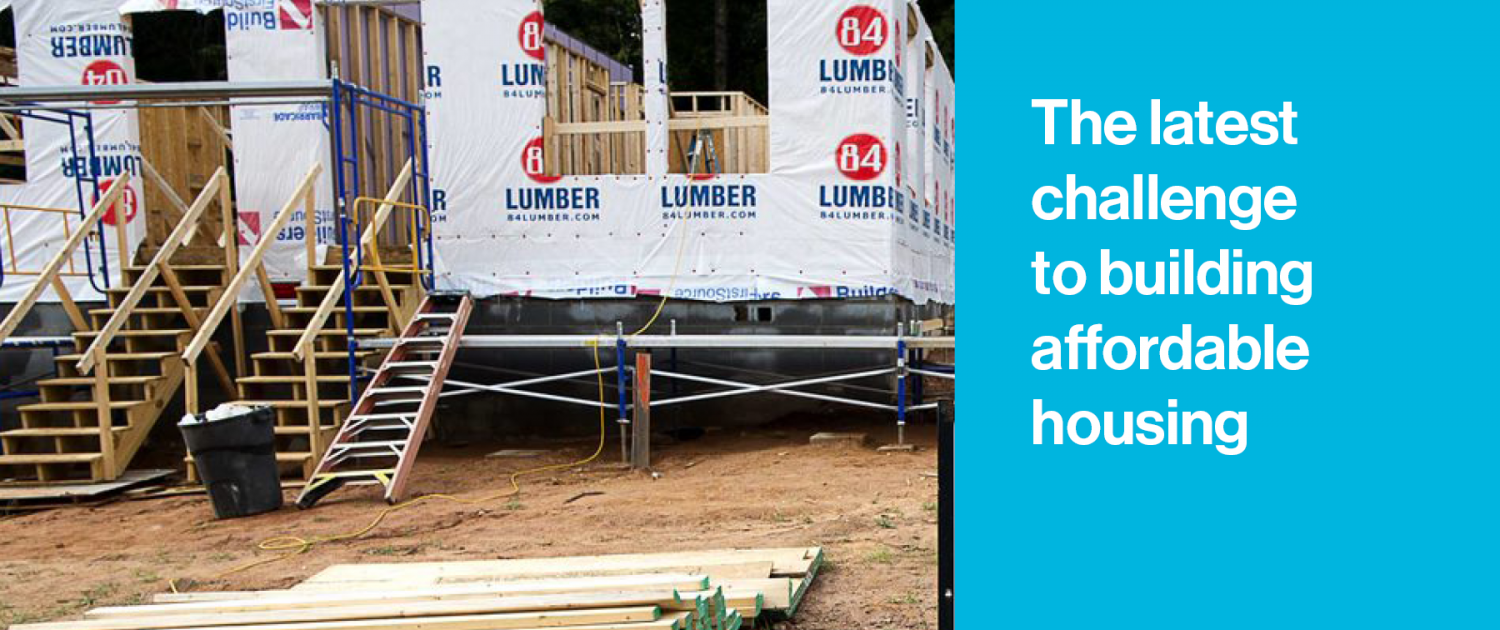By Ariane Kjellquist
Asheville Habitat is known for consistency and the ability to deliver a quality product on-time. But what happens when a convergence of external influences outside of its control disrupt the well-oiled machine? “The predictable rhythm is gone. We’ve become more flexible and patient,” remarked Sumaya El-Attar, Asheville Habitat’s Construction Administrator.
Skyrocketing building material prices, supply chain issues, and a building boom created a particularly challenging environment in which to build affordable housing.
National Association of Home Builders (NAHB) reports this month that it now costs nearly $36,000 more to build an average new single-family home. “What we are experiencing is a cost increase of about $20,000 to $25,000 more per house,” says Paul Reeves, Director of Construction Services at Asheville Area Habitat for Humanity. “And the costs are anticipated to keep rising.” Sumaya added that the price of lumber has increased by 30%. The affiliate plans to build 12 new homes in the coming fiscal year, and complete 70 home repair projects. That means as much as $300,000 in additional cost, a big hurdle for a non-profit constructing affordable housing.
Unlike other builders, Asheville Habitat can’t pass on to homebuyers increased costs. And Habitat homebuyers can’t wait. Asheville Habitat builds and sells homes to households who earn 40-80% of the area median income. The local housing market provides few opportunities for these families. Construction delays mean more time living in substandard, unsafe, and unaffordable housing.
The overall construction cost increase is in part due to a 30% price increase in lumber, but there are other contributing factors. A suspension of many national Gift in Kind (GIK) programs which typically supply Asheville Habitat with a range of materials and products at no-cost, is a new expense.
The availability of materials is impacting the bottom line, too. “We have had to make the decision to use different materials due to supply chain issues and sometimes that means going with a higher priced product because that is what’s available,” shared Paul.
Further complicating the construction process is the longer lead-times. Sumaya said, “What we used to order 2 weeks in advance now has to be ordered 16-20 weeks ahead. Vinyl siding and window orders are being placed long before house construction has even started.”
And then there is labor. Due to Covid, volunteers were called off completely for many months and though they have been returning in greater numbers as vaccinations increase and restrictions ease, we’re not yet back to full capacity. To help keep homeowner closings on schedule, we chose to subcontract some work that we normally do ourselves. But the availability of sub-contractors has been limited, too.
By June 30, we will have welcomed 12 more families home this fiscal year, despite a pandemic and all the related challenges. We are grateful to everyone who stepped up and helped us achieve this feat. “Habitat’s work is critical to our community. High land costs, Covid limits on volunteers, and now spiking lumber prices make it challenging to meet the need. We will be counting on this generous community to again rise to the challenge,” said Barnett.
Read more in this Citizen-Times article.
If you can help Habitat bridge the gap, please make a gift today. Thank you!




